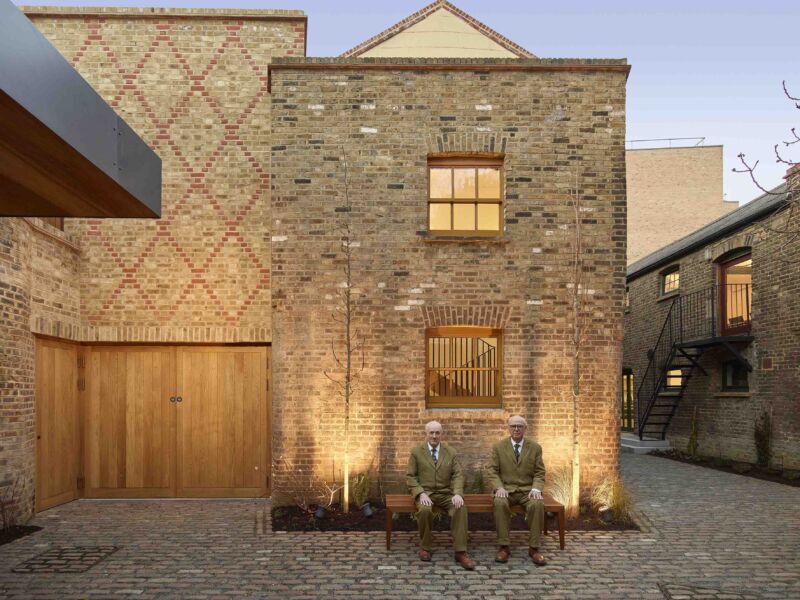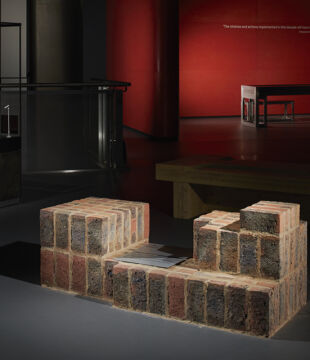
Details
Location: London
Brick Manufacturer: Ibstock Brick Limited & Wienerberger Limited
Brick Name: Berkshire Orange Stock, Funton Old Chelsea Yellow & Smeed Dean Docklands Yellow Multi
Architect: SIRS Architects
Contractor: Westgreen Construction Limited
About the project
SIRS Architects have restored and converted a former brewery building in London’s East End into Gilbert & George’s art foundation, breathing new life into the historic fabric of the area and seeking to immerse visitors in the unique realm of Gilbert & George through a sequence of spaces and built details.
Visitors are greeted by a wrought iron gate before entering through a secluded cobbled courtyard and a dimly lit reception area leading visitors to three contemporary exhibition spaces of different scale and feel. By combining preserved, restored and contemporary elements, the project’s design philosophy honours the building's industrial past aligning with the artists’ vision of architectural heritage, design and art display.
The client brief required a challenging approach to create sufficient space for the Centre's transformation on a restricted site. A new basement level was constructed under the pre-existing brewery footprint and a new above-ground side extension was added. The aim was to complement the historic structure with a discrete design in clay-brickwork that is exciting in its details and yet simple to behold with all moving parts concealed from the visitor providing cutting-edge gallery interiors, art storage facilities and a caretaker’s apartment.
Situated in the “Brick Lane and Fournier Street Conservation Area”, the original building dates back to 1820. Any building extensions or amendments had therefore to be in keeping with the surrounding historic fabric - predominantly Victorian London Stock brickwork - to achieve consents by conservation department, local historical building society as well as 37 party- walls. The use of London clay brickwork was therefore selected for the new built extensions, internal wall linings as well as repairs of the existing masonry fabric to seamlessly blend new and old structures.
The scheme was designed with the objective to reduce demolition extent to a minimum in favour of converting and retrofitting the existing building fabric. Re-used site materials were re-installed where possible and re-cycled materials were selected when additional materials were required. New construction components were sourced from local and natural materials (i.e London Clay Brickwork) and installed by local craftsmen to minimise the associated transport impact.
The design prioritises sustainable use of energy, water and material resources via active and passive design principles considering socio-economic and lifecycle factors, reducing overheating and flooding via minimised demolition, use of re- used/re-cycled/local materials, collaboration with local companies, in-house art storage to reduce shipping impact, high thermal mass, thermal performance and airtightness, reduced UV and solar radiation admittance, digital and weather compensated BMS system, motion controlled Led lighting, photocatalytic paints, re-circulated ventilation, antimicrobial surfaces, harvested rainwater for horticultural irrigation of the biodiverse green courtyard with permeable paving.
As built representation and ultimate fulfilment of Gilbert & George’s "Art for All’ ethos and a gift to London, the Centre aims to become a leading cultural institution and a hub for research and scholarship, committed to free access for all members of the community. The Centre welcomed over 10,000 visitors in the first 12 days open days and secured worldwide media coverage since opening in April this year.
Sponsored by Brick Awards

The Annual Brick Awards is an Architectural competition aimed at attracting and showcasing architects wishing to submit their brick projects for recognition and celebration. Attracting 300 entries in 17 hotly contested categories every year, it has become one of the most popular events in the construction calendar. If you wish to sponsor this award, please contact George Spreckley
















